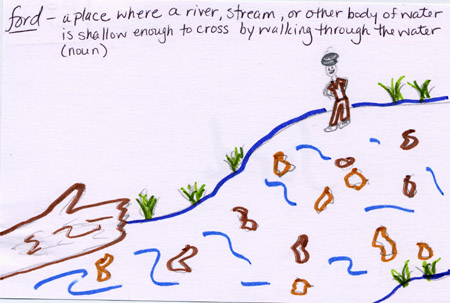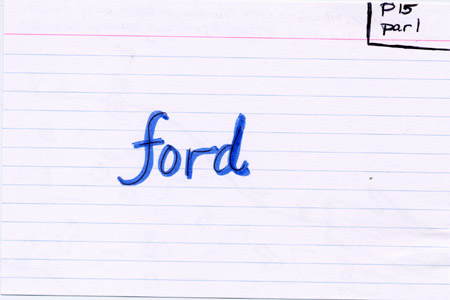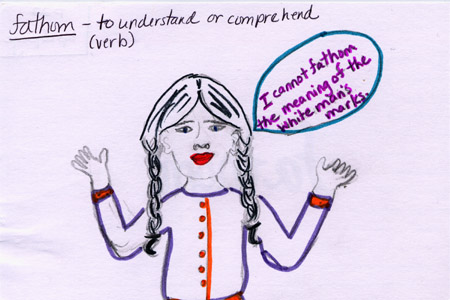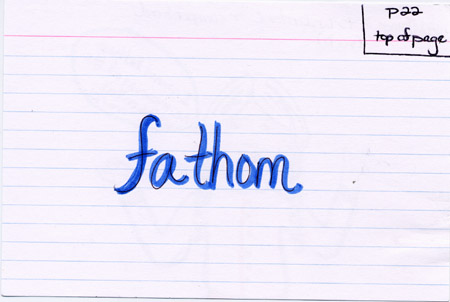Ahyoka
Fourth Grade (on grade level)
Section 3 (pages 1-27)
Summary
Ahyoka and her father, Sequoyah, are trying to create
a way for their people, the Tsalagi (Cherokee) Indians, to communicate
and keep written records. They begin by creating pictures for every
word in their spoken language. This takes much time and hard work;
so Sequoyah is unable continue creating jewelry. He is one of the
best silversmiths, so most people think Sequoyah and Ahyoka are crazy to
spend so much time drawing pictures and not making valuable jewelry.
They think that it is a pointless endeavor.
Ahyoka and Sequoyah make a trip to the village to
trade some items for Utiya, Ahyoka’s mother. They look for Mr. Adair
to see if he has found a book of talking leaves for them to try to get
some ideas from for their written language. Mr. Adair tells them
that the book he has is more valuable than snakeroot, which is all they
have to trade. While Sequoyah sadly goes on about his business in
the village, Ahyoka trades her fine silver bracelet that Sequoyah made
for her in exchange for the book. They are both very pleased to have
the book in their possession, and they hope to be able to glean something
from it that will help them with their project.
When they arrive home, they find that Utiya has
burnt all of their drawings. Two year’s worth of work was gone.
Sequoyah was furious. He told Utiya he would no longer live with
her. He instructed Ahyoka to stay with Utiya. Ahyoka wanted
to be with her father to help him continue working on their written language,
so she ran away to find him. All of their family turned their backs
on Sequoyah and Ahyoka. Someone who did not agree with what they
were trying to do burned the cabin they were staying in.
They begin to travel west, across the Mississippi,
searching for a place where they will be supported and the purpose of their
written language will be understood. As they travel, they discuss
ways to make their task simpler. They try to make sense of the white
man’s marks, so that they can learn from the book. They discover
that the marks in the book stand for sounds, rather than an individual
picture for every word.
They work together to create the Cherokee alphabet
that would allow their people to communicate and document their experiences.
Most of the Cherokee people are reluctant to use the alphabet, at first.
They think Sequoyah and the alphabet use some kind of magic. Eventually,
they realize the value and importance of the alphabet and begin to use
it for themselves.
Discussion Director
The discussion director's job is to develop questions for the group
members to discuss about this section of the book. The focus is on
important ideas and issues in this section and designing questions that
address them.
1 Inference
1 Topic
1 Figurative Language
1 MCEOG
1 Setting
Inference
1. Ahyoka felt that she and her father had just begun working
on their pictures even though they had been working on them for two years
because:
A. They still had a lot of work to do
B. All of their pictures were wrong.
C. The pictures got blown away by the wind.
D. Sequoyah decided that they should start
over.
(A. They still had a lot of work to do (Page 1, paragraph 2)).
Topic
2. What are talking leaves? Explain why they are given
this name.
(Talking leaves are pages in books with letters and words on them.
Sequoyah and Ahyoka call them talking leaves because the white people can
read them, and thus, make them talk. They refer to them as leaves,
as paper comes from trees and paper is very similar to crisp, dry leaves
(Page 2, paragraph 2)).
Figurative Language
3. Give one example of personification and one example of similes
in Section three (chapters 1-3), and their page and paragraph number.
(Personification- Page 17, paragraph 1: Tiny black marks marched
across the white pages.
Similes- Page 23, paragraph 4: She felt as though she was going
to pop like dried corn thrown into a crackling fire.)
Passage Picker
The Passage Picker's job is to select significant passages from the
selections being read; determine why those passages are important; call
other group member's attention to the passage; and lead a discussion about
the passage.
Steps:
1. Pick
out a passage you would like to share.
2. Write
down the page and paragraph number.
3. Write
down the first two words and the last two words of your passage.
4. Write
down the reason you chose the passage, and explain why!
5. Ask
a question about your passage, and give an answer.
6. Write
down the Author's Purpose: To Describe, To Entertain, To Inform,
or To Persuade.
1. Passage One- Descriptive
2. Page 21, paragraph 4
3. Sequoyah was . . . to Ahyoka.
4. I like the description of how English letters look to Ahyoka.
5. Why did the white man's marks not make sense to Ahyoka like
the ones she and Sequoyah made?
(The representations that she and Sequoyah make for their words actually
look like what the words are, like the passage mentions about birds.
That way, when you see their drawings, you can tell exactly what it is.
Ahyoka did not know how to read the white man's marks, so they would not
have made sense to her.)
6. Author's Purpose: To describe.
1. Passage Two- Descriptive
2. Page 6, paragraph 2 - Page 7, paragraph 1
3. "Ahyoka hid. . . mean anger!"
4. This passage describes how Sequoyah and Ahyoka have to think
about their words and determine how to represent each word in a way that
makes sense. I like the way sunlight is described as dancing on Sequoyah's
hands.
5. Pick a word from your language and try to draw a picture to
represent it.
6. Author's Purpose: To describe.
Passage Three- Informative
Passage Four- Entertaining
Word Wizard
The Word Wizard's job is to search the section being read for words
that are key to understanding what is happening in the story; note the
page and sentence where it can be found; check the dictionary meaning of
the word; lead a discussion about the meaning and intent of the word from
context and what the word contributes to the importance of the passage.
Steps:
1. Write down the word.
2. Copy the sentence from the book in which
the word appears.
3. Look up the word in the dictionary.
4. Using the context clues from the sentence
and the dictionary definition, write in your own words the
definition of the word.
5. Write the correct part of speech (noun,
verb, adjective, or adverb).
6. Write a question and the answer about the
word that would help you teach the word to your group,
refer back to the text,
or write a sentence using the Word Wizard word.
7. Make your Word Wizard card. Be sure
to include in big print, your word and the page and paragraph
number. On the other
side of the card should be a picture, the word, and the definition of the
word.
1. Ford, Page 15, paragraph 1
2. Ahyoka and Sequoyah crossed the shallow ford.
3-4. ford- a place where a river, stream, or other body of water
is shallow enough to cross by walking through the water
5. noun
6. Jim followed the stream until he found a ford that he could
cross without getting his clothes wet.
7.


1. Fathom, Page 22, top of page
2. But Ahyoka could not fathom the meaning of a snail crawling
up a reed beside the full moon.
3-4. fathom- to understand or comprehend
5. verb
6. The article had so many large words in it that Sam could not
fathom the purpose of it.
7.


3. shafts, Page 22, top
4. pester, Page 10, paragraph 5
Character Sketcher
The Character Sketcher's job is to develop a character map of major
characters in the section of text being read.
Steps:
1. Pick out a character that interests you. Choose three
words to describe this character.
2. For each trait, you will give proof (an example) from the
book (write down page and paragraph).
3. Write out the character's goal, problem, and solution (page
and paragraph).
4. Last, you will draw a picture of your character.

Investigator
The Investigator's job is to examine other sources (newspaper, web,
encyclopedia, content texts, etc.) that have connections to the book being
read and share that information with the group.
What is Snakeroot? Why would it be valuable to trade? (Page
4, paragraph 4)
(A homeopathic remedy- Latin name Cimicifuga Racemosa [Black Snake-Root]-
It affects the muscular system by relieving aches, cramps, and pains in
the limbs and especially in the large muscles.
www.in.net/wellness/progwell/cfs-ache.htm
Black Cohosh, found in Canada and forest areas of North America, got
the name Black Snake-Root from being used to ease the pain of snakebites.
It is commonly used to relieve arthritis, lower back pain, and cramps,
as well as reducing mucus production and coughs, caused by asthma, bronchitis,
and whooping cough. It also relieves swelling and soreness and is
considered a safe sedative for anxiety and nervousness. Black Snake-Root
offers nutritional support for women due to its effective amounts of calcium,
potassium, magnesium, iron, and estrogenic substances.
http://www.1001herbs.com/blackcohosh/
It is valuable to trade because it is a natural remedy for many ailments.
You could not just go to the doctor and get medicine in this time period.
So, natural treatments were used for health problems.




